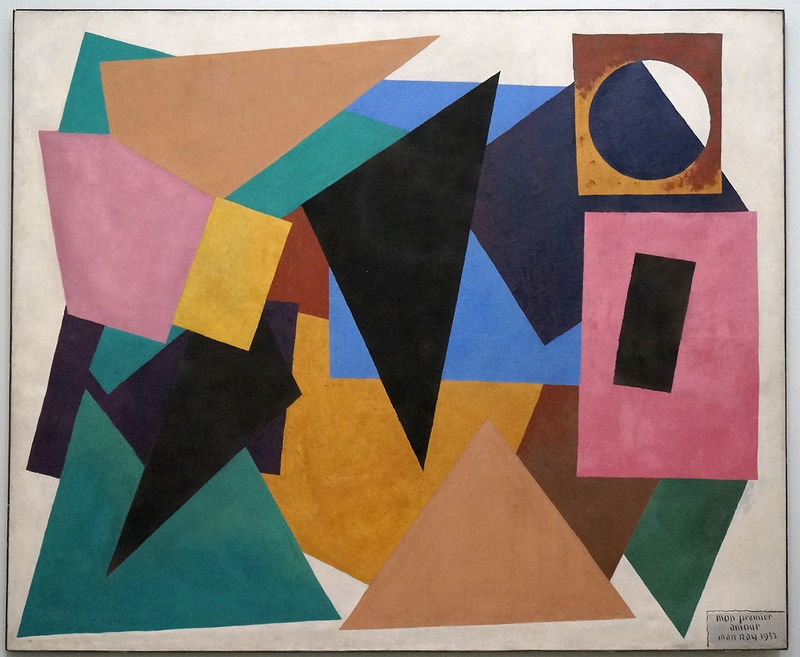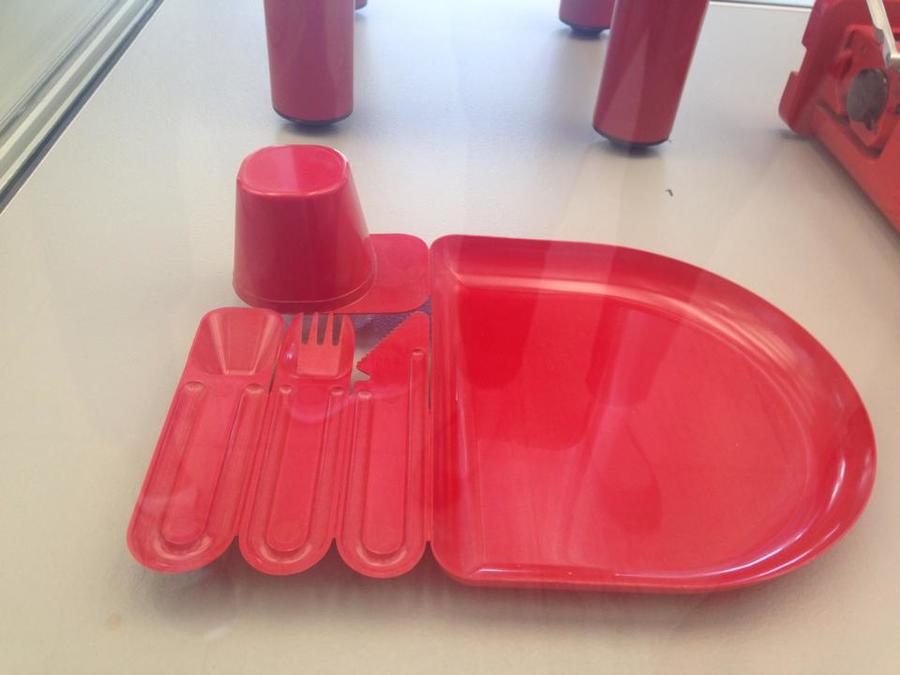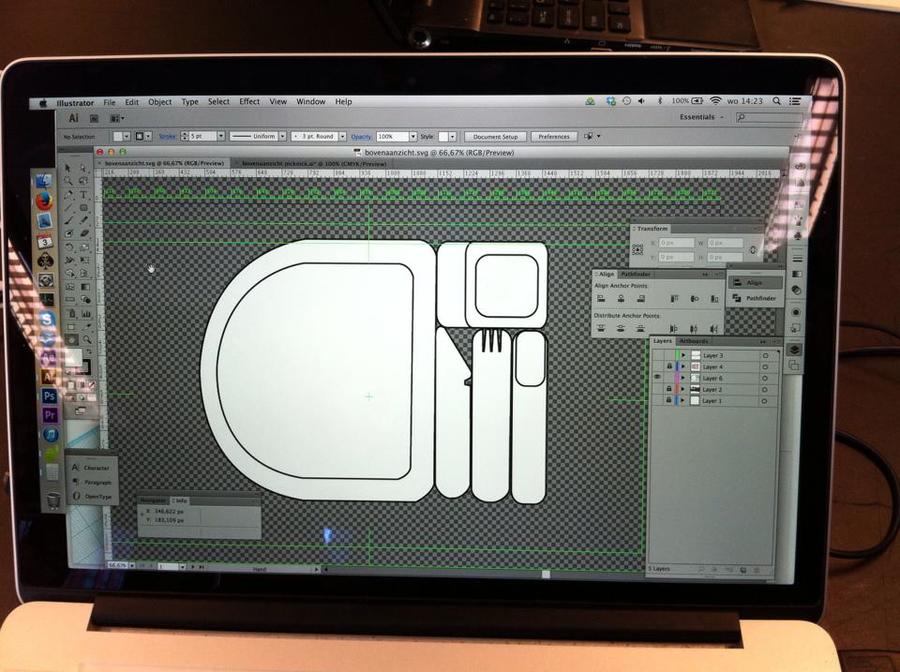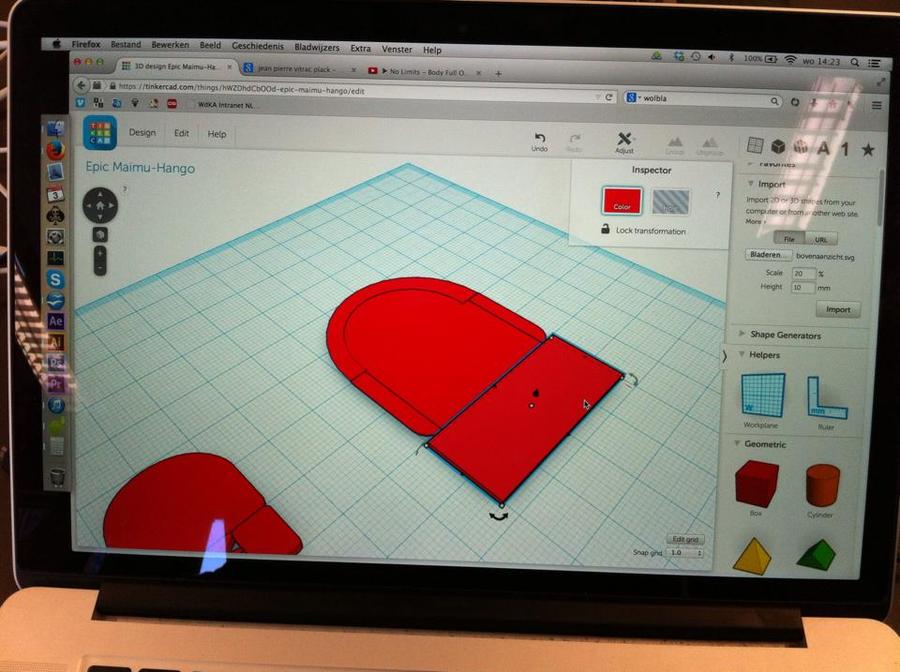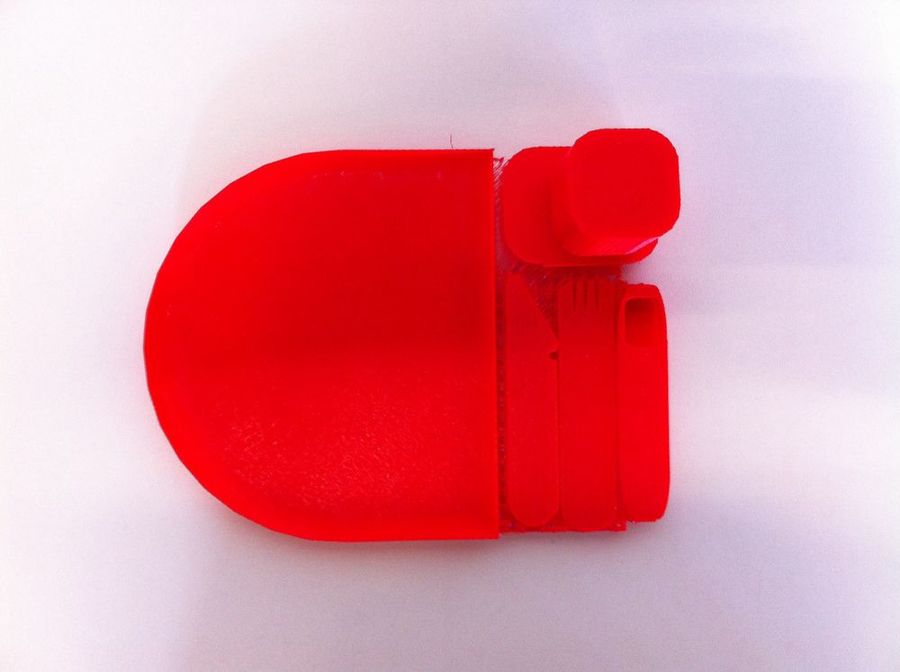User:Anna.saaltink
Mon Premier Amour - 1952 - Man Ray 220 x 200 cm - Oil on canvas
When I first saw this painting I thought wooowww this is huge. I like the colorful composition of this abstract geometrical painting. After I saw the titel and that it was a painting by Man Ray. I was surprised because I only knew him as a photographer. This made me curious and I started doing research about the painting but I couldn't find a lot of information on internet. Google popped up three pictures what I thought was odd and interesting at the same time. When I continued researching I found out that there was one more painting that was also called 'Mon premier amour'. What did this mean? two first loves? Thats not possible or is it? The tittle you can interpretative in more ways; this painting was a abstract translation of his first love (a woman) or this painting was his first or this painting was his favorite or painting in general was his favorite? It gave me a lot of questions and made me more curious. I wanted to know more about this mysterious not very known painting.
In the library, mediatheek and the internet I found more information about the painting.
It was a rare example of geometric abstraction in his work. The painting was inspired by collages of colored paper and airbrush paintings he made between 1917 and 1920.
Also I found out that the tittle refers to the airbrush technique.
In all the books I read and a documentary i watched I didn't got any more new information about the painting. I decided get to know Man Ray and his work better to understand the painting better.
Contents
Day one
Tuesday 2nd of September As a group we decided we wanted to create a 3D object. After looking at the Boijmans collection we chose a rubber vase and we wanted to scan this with the 123 catch app. This did not work with our object because of the reflection, transparent surfaces and blurry photo's. Most objects were not easy to reach because there were behind glass so we chose a other method and an other object. We chose the picknick set of Jean Pierre Vitrac (1977). We wanted to keep the function and the idea of the set but in a different implementation. We wanted to put together our picknick set with different plates and cutlery we found in shops or at home then make pictures of it and make a good 3D scan with the 123 catch app. After a discussion with the teachers we realized, that we first need to have the data. I order to share it on the wiki page. That for we had to change our idea. We came up with the idea to trace over the photos with illustrator and then transform it into a 3D model in tinker cad.
Day two
Wednesday 3rd of September We decided to make different versions for the exhibition on thursday. One 3D print model, with the same color and form but in a smaller version because with the printer the exact dimensions were not possible at the WDKA. Secondly we make our own picknick set molt with multifunction cutlery (3 in 1) and a square plate. We wanted to make a more minimalistic form but keep the original snap off idea of the pick nick set of Vitrac. We chose to use the vacuum forming technique. That we are doing tomorrow (Thursday) at the Stadsfablab in Utrecht. We want to make a couple of this object in different colors. That could work in mass production.
Day four
Thursday 4th of September Hendrick finished the 3D drawing in tinkercad and started printing it. Meanwhile our own pick nick set had some troubles. The glue was not fully dry, what may be a problem for the vacuuming. Still Fabienne and I went to Utrecht. Ovethere they told us we could not use or fork/knife/spoon construction because it was was plastic and it would melt. We still wanted to try something so we continued with the plate. This also was not working as we thought. The PET plastic they used and gave us was melting and got to thin, also it was not vacuum the whole plate. They told us it was because of the shape of the plate and we would have dug a hole into the middle so it could vacuum better. Without the result we where hoping for we had to return back to Rotterdam.
Reflection
It was interesting to see how every group approached their project and with what techniques they worked. Hendrick did the digital and 3D-printing part of our project. It was nice to get already an idea of how the 3D software works. Seeing that you can build this in a program and get a read model out of the 3D printer is amazing. We maybe failed with producing the pick nick set with the vacuum forming but we had some nice experience going to the stadsfablab in Utrecht and we learned more about the vacuum technique and we saw what is kind of other machines they have for next time.
